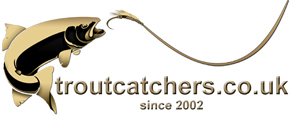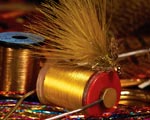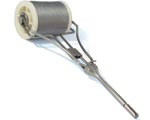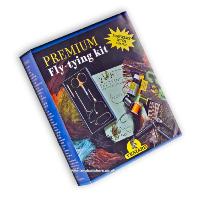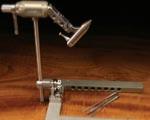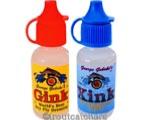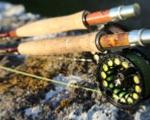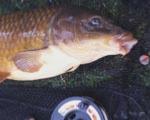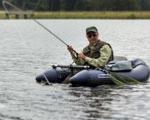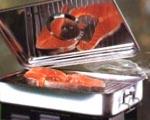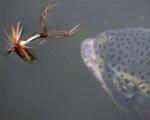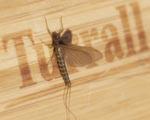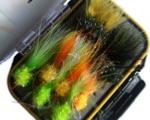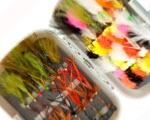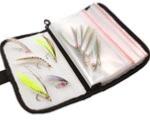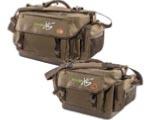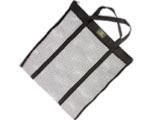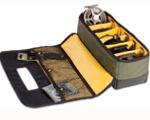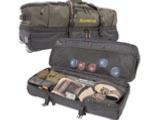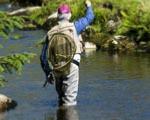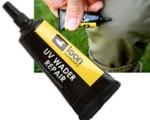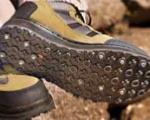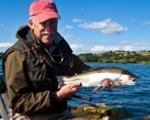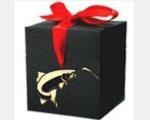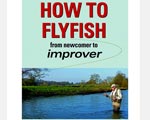01933 388281
|
|
Everything you ever wanted to know about the Basics of Trout Flies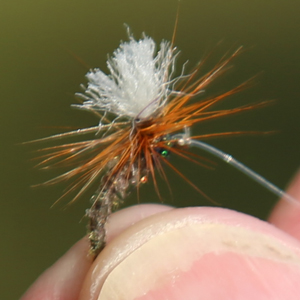 Trout Flies - There are hundreds of different artificial Trout Fly patterns available to fly fishermen today.... Trout Fishing Flies usually fall into two overall categories; Flies to deceive the Trout into believing it is real food, which imitate the natural foods available to the fish such as Nymphs, and flies to provoke the Trout’s predatory streak, which tend to be bright in colour and are not intended to look natural but to lure and aggravate the Trout into taking the Trout fly. These categories can be further split and include Wet Trout Flies, Dry Trout Flies, Nymphs and Lures. 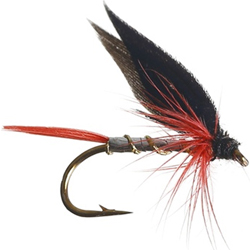 Wet Trout Flies success is how you fish the fly, & match to a natural specific insect that trout are feeding on. How you fish the fly is the most important skill, but when the fish need that little more encouragement, matching is also key to success. Wet Trout Flies are presented to the Trout under the surface of the water where it finds most of its food, sometimes finding food on the bottom and in the weeds, then through to mid surface taking nymphs & pupae on the way to the surface; one method of using these flies is to try casting across the water and slightly down current, let the fly sink & let it move naturally in the water, the fly will rise when the line tightens mimicking a natural insect rise in the waters surface. It's on this rise that fish usually strike! Another deadly method is if you spot a trout, cast in front of it then twitch and wait for the Take! Then there’s the traditional sink & retrieve method. You can also fish several different wet flies together which is especially productive to find out which are the most effective on their day. 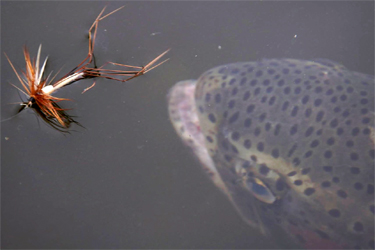 Dry Trout Flies are designed to imitate a wide variety of flies and insects on or in the water's surface. The fly's buoyancy is usually achieved by winding the rigid fibers from a cock hackle around the fly to form a collar hackle, usually towards the head to distribute the weight of the fly on the water's surface. Alternatively, the fly can be constructed using Deer or Elk Hair, the fibers of which are hollow, again enabling the fly to float. Dry fly buoyancy is further improved with a floatant (Gherke's Gink is the most popular) which you warm a small blob in your hand, then gently rub into the hackles. The best way to present the dry fly is with a floating line and a tapered leader that has been de-greased; this will make sure there is no shine, therefore not spook the fish. The techniques for using a dry fly is to drift it on the surface, occasionally pull it for a small distance to make it look like it is accelerating prior to attempting a take off. Leave the fly to sit for a while then repeat, often this will stimulate trout to attack. This is the same if you see a trout swimming near the fly, but not biting, twitch, the trout may believe that it could miss its opportunity. AND NEVER TAKE YOUR EYES OFF YOUR FLY!!! 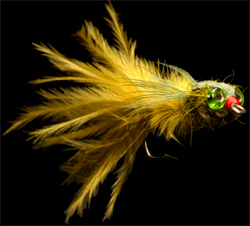 Nymph Trout Flies - Trout mainly feed below the water surface where they hunt on Nymphs. Insects lay their eggs on to the water surface, these then drops to the bottom where they stay until they hatch, and the newly developed immature aquatic insects (nymphs) are then food for hungry trout! There are hundreds of nymph patterns available such as the Caddis Fly, Damsel Fly and of course the fisherman's favorite, the Mayfly. Natural coloured fly tying materials are often used to create nymphs in order to help fool the fish into believing the fly is natural food. The stage beyond the nymph is the emerger; a fly tied to represent one of the natural insect's most vulnerable stages of life. As these insects hatch, and therefore emerge or suspend from the water, they hang in the water's surface, shedding it's 'shuck' or skin whilst drying its wings before taking flight. Emerger or suspender patterns therefore can be classed as Dry Flies as they sit within the waters surface. Tactics for Nymph flies include fishing the nymph along the bottom, move them slowly, occasionally give it a sharp pull as if the fly is trying to escape from a hungry fish, these movements sometimes induce a following trout to attack. Other tactics include suspending the fly under the water or, on the bottom & using a strike indicator to see the bite, especially effective on large still waters 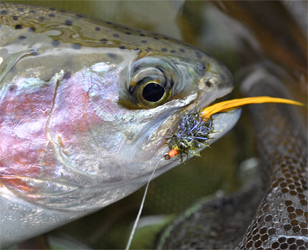 Lure Fishing Trout Flies - the extreme opposite of the natural, imitative patterns. A wide range of colours and materials are used in the dressing of these Trout Flies, the purpose is to trigger the Trout's aggression to induce 'a take'. However Lures can also be imitative in their own right, where other food groups such as fish fry, tadpoles and leeches are concerned. Cast & retrieve your lure at different depths casting in an arc. No action? If Bank Fishing, move two or three steps, try again, and again to cover all water until you find your fish! If boat fishing, pull up anchor and move, generally fish swim against any water movement, and not normally with the sun in their eyes! 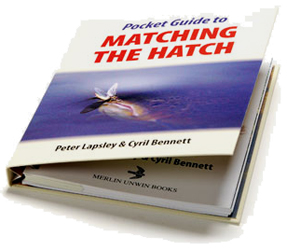 Finally, the above guide is just a small snapshot giving an outline of the basics. We would recommend that you spend some time studing further as you progress with this absorbing hobby - whatever your learning style theres plenty of information out there! Books,Magazines, millions of youtube articles and so on. Enjoy..... |
